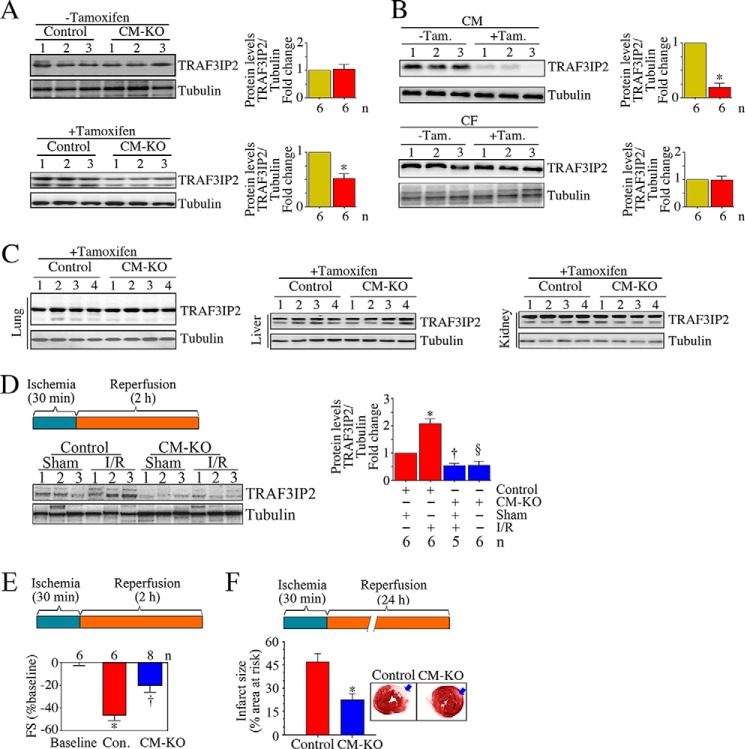FIGURE 2.
Conditional, cardiomyocyte-specific TRAF3IP2 gene deletion attenuates I/R-induced contractile dysfunction and myocardial injury. A and B, administration of tamoxifen attenuated myocardial TRAF3IP2 expression in cardiomyocyte-specific TRAF3IP2 gene knock-out (CM-KO), but not control mice. One month after last tamoxifen (Tam.) administration, TRAF3IP2 expression in control and CM-KO mice was analyzed by immunoblotting (A). CM, but not cardiac fibroblasts (CF), from tamoxifen administered CM-KO expressed almost no TRAF3IP2 expression (B, upper panel). *, p < 0.01 versus respective control. C, tamoxifen fails to affect TRAF3IP2 expression in non-cardiac tissue from CM-KO mice. Lung, liver, and kidneys from animals described in A were analyzed for TRAF3IP2 expression by immunoblotting. D, I/R fails to up-regulate TRAF3IP2 expression in the CM-KO hearts. Control and CM-KO mice underwent 30 min ischemia/2 h reperfusion (I/R protocol is detailed on the left). TRAF3IP2 expression in the ischemic zones was analyzed by immunoblotting, and densitometric analysis from 5 to 6 animals is summarized on the right. *, p < 0.01 versus control-Sham; †, p < 0.05 versus control-Sham; §, p < 0.01 versus control-I/R. E and F, TRAF3IP2 gene deletion attenuates I/R-induced myocardial dysfunction (E) and cardiac injury (F). Details of the I/R protocol are shown in the respective upper panels. Myocardial function was analyzed by echocardiography, and FS is shown as a change from baseline (E). A representative image of infarct is shown in the inset (F), and infarct size as % area at risk from 6 to 8 animals is summarized in the bottom. *, p < 0.001 versus baseline or respective control; †, p < 0.05 versus control (Con.).

